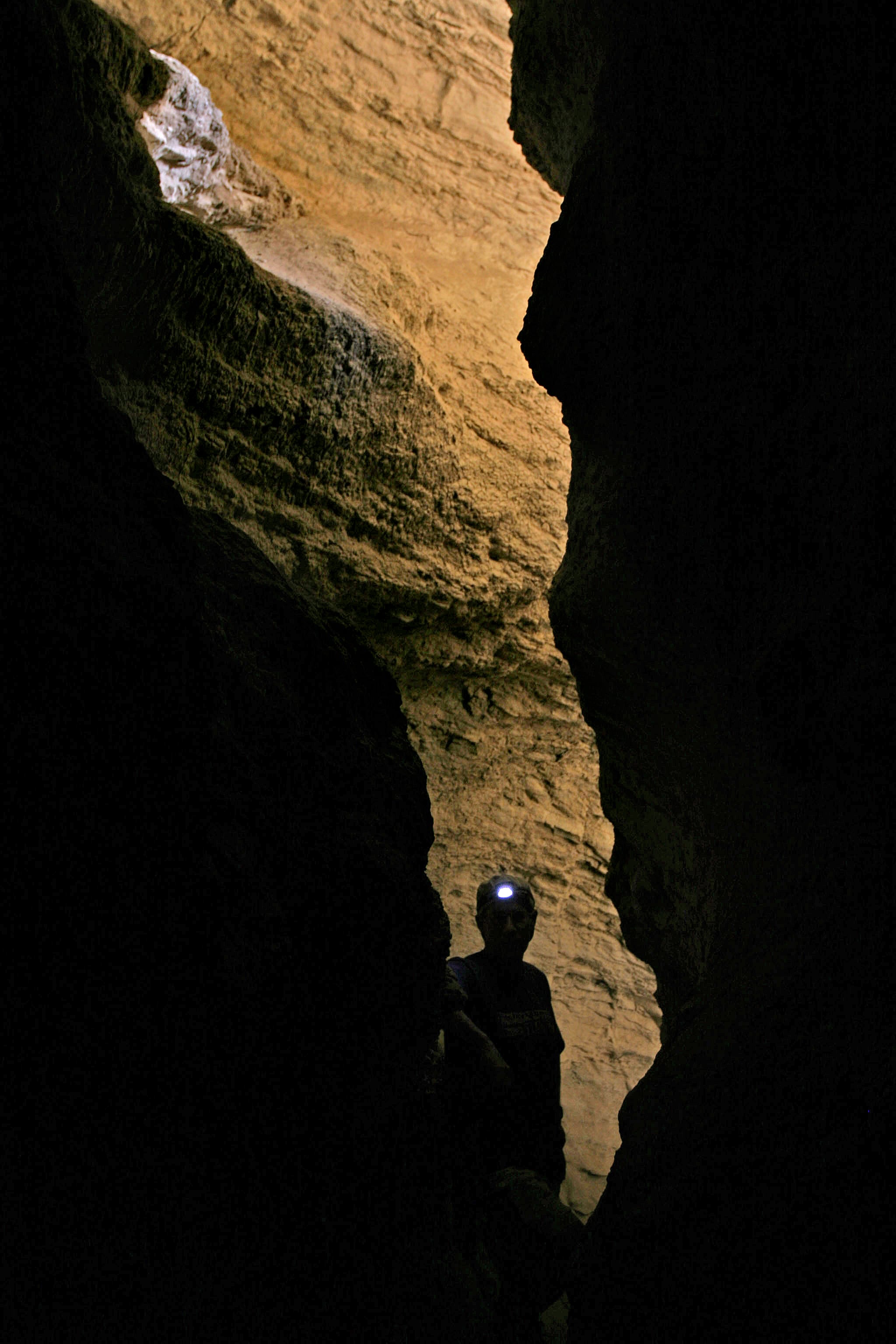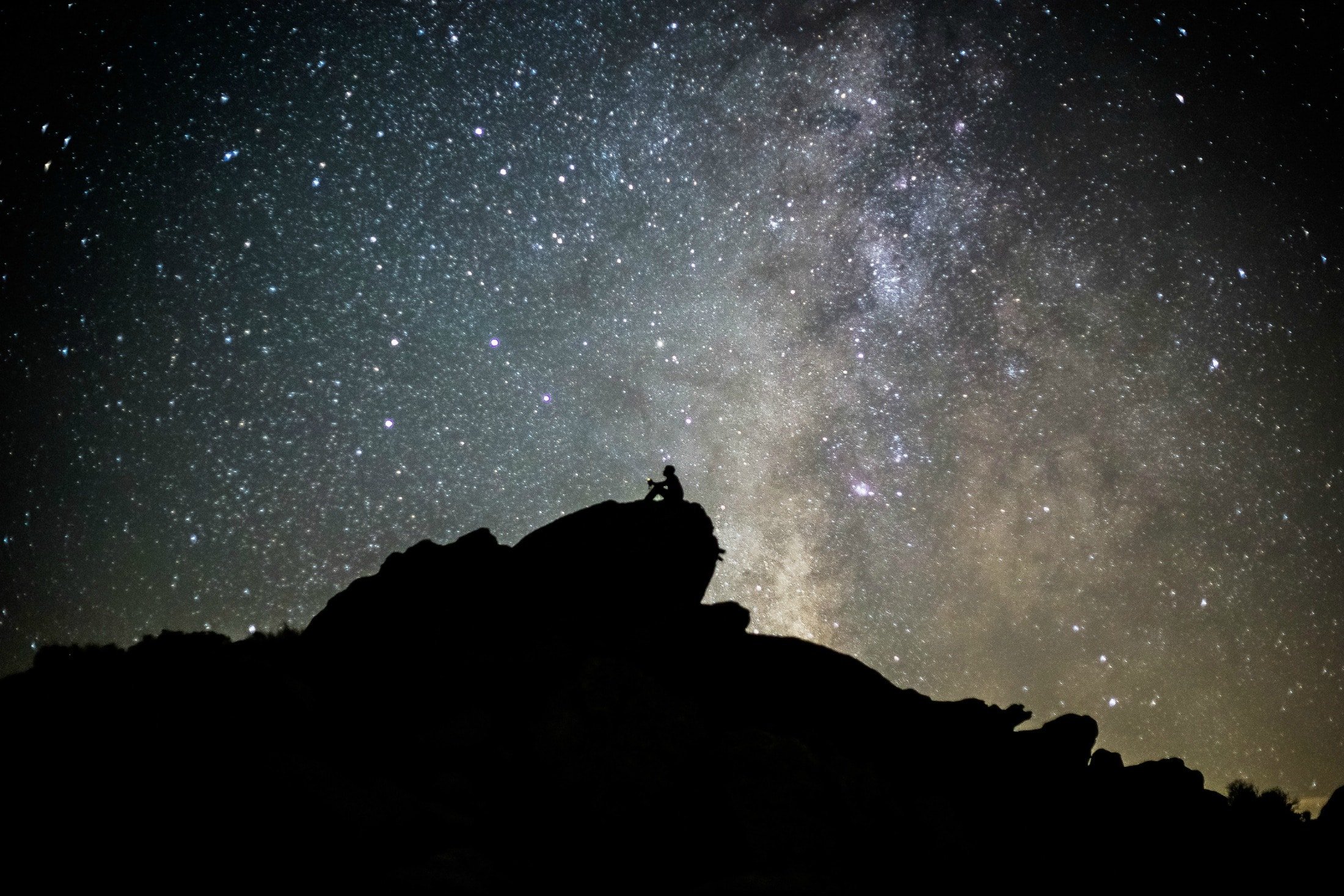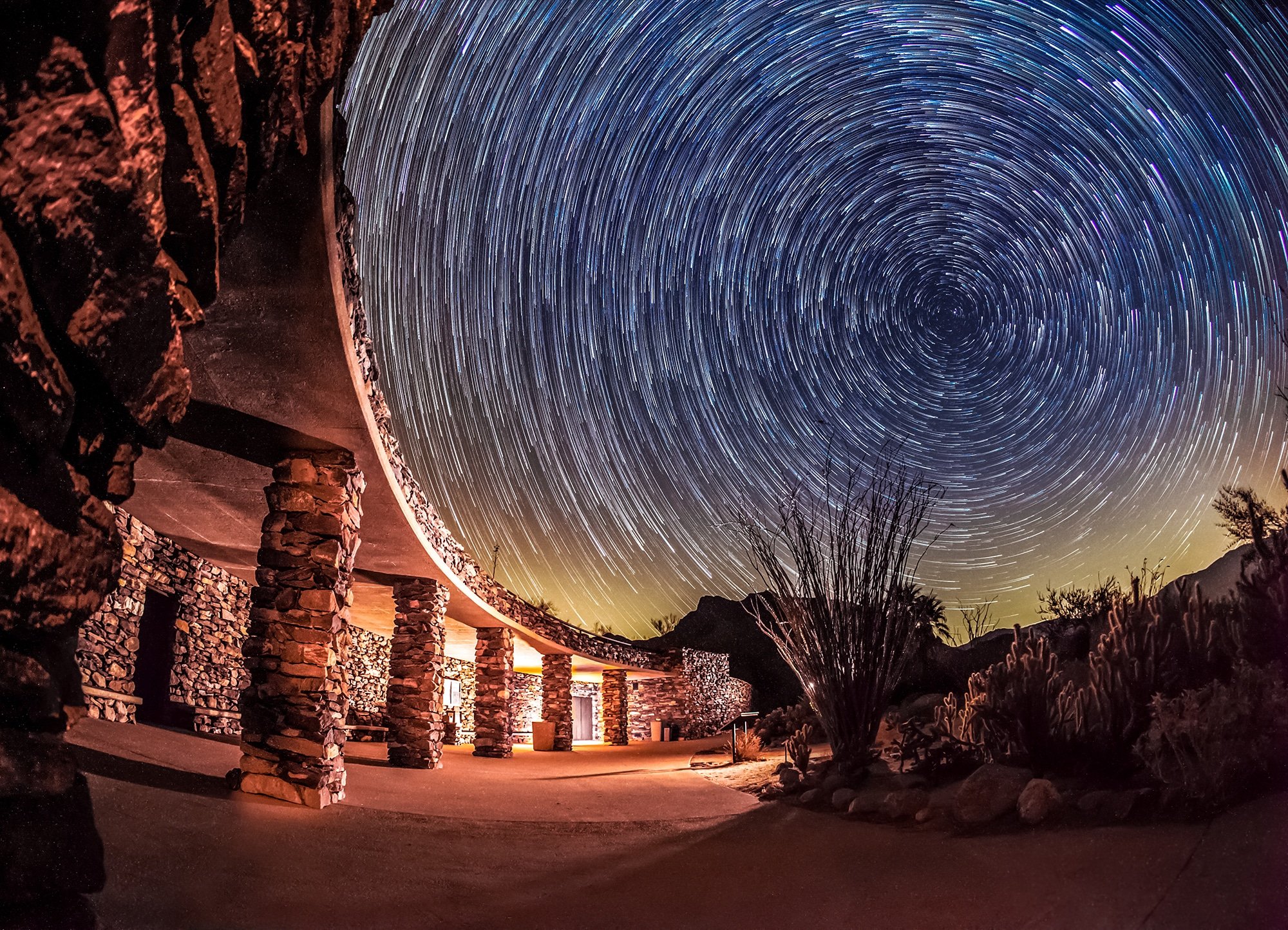Did you know that San Diego is home to part of California’s largest State Park?
Anza-Borrego Desert State Park is famous for its extraordinary spring wildflowers, majestic views, and natural wonders. Visitors can discover hidden gems, from slot canyons and cactus-studded hills, peninsular ranges, natural palm oases, wilderness areas, and almost alien-looking landscapes.
Fun fact: Anza-Borrego Desert State Park actually spans over three counties: San Diego County, Riverside County, and Imperial County. It’s the largest state park in the lower 48 states, with more than 1,000 square miles and over 650,000 acres.
There are so many things to do in Anza-Borrego Desert State Park and plenty to see. Here are the top reasons why it’s worth the trip to this magical California desert park.
99% of the Park Is Free

If you’re looking for a low-cost vacation, public parks are fantastic. Managed by the State of California, Anza-Borrego Desert State Park is public land which means it belongs to all of us.
Guests can enjoy free camping, hiking, site-seeing, interpretive programs, natural and archaeological labs, and sites, and much more detailed below.
Note: A few more popular areas have day-use fees. Prices vary depending on the time of year and location, but generally, you will be charged a small fee of around $10 at Anza-Borrego Palm Canyon, Tamarisk Grove, Bow Willow, Vern Whitaker Horse Camp, and the Visitor Center. Overnight stays also have varying costs.
Anza-Borrego Desert State Park Is Closer Than You Think

The trip from San Diego to Anza-Borrego takes about two hours. It’s a similar two-hour drive from both Riverside and Palm Springs. It’s a pleasant drive with beautiful scenery and at most times, no traffic. Most areas don’t have special vehicle requirements, so go ahead and take a family road trip with your kids. It’s not uncommon for people to take day trips from San Diego to this California State Park.
Borrego Springs is in the center and the only town in California that is completely surrounded by a state park. Enjoy the breathtakingly beautiful mountain ranges in and surrounding the Anza-Borrego National Park.
You will come to find the gorgeous mountainous views of Santa Rosas and Bucksnorts to the north, the Borrego Mountains to the east, the Jacumba Mountains to the south, and the Vallecito mountains to the west. Enjoy this spectacular experience on your road trip in the park.
The Blooming San Diego Desert Wildflowers

Anza-Borrego Desert State Park is at its most colorful in springtime and early summer, depending on the rains. This is when many spectacular species of flowers, bushes, and cacti come into bloom. They brighten up the otherwise bare desert terrain and attract crowds of people to the area.
While this can make the miles of dirt roads busier and more congested than usual, the stunning blooms are worth it. Set off on one of the many hiking trails through the park and practice your nature photography skills especially if the season is a super bloom following heavy rains.
Note: These wildflowers are protected by state law so you may not pick them. Be careful not to step on them either.
There’s So Much More Than Anza-Borrego Wildflowers

As stated above, one of the attractions Anza-Borrego is most famous for is the wildflower season. Where, depending on the weather conditions throughout the year, the area is blanketed by colorful blooms that visitors travel far and wide to see.
However, the park is also a United Nations biosphere reserve, offering beautiful natural sights year-round, including narrow sandstone canyons, teddy bear cholla (cacti that look fluffy like teddy bears – but don’t be tricked into touching them), waterfalls, pink sunset pillars, as well as the famous Pacific Crest Trail.
“I actually prefer the cactus blooms,” said Sara Husby, Anza-Borrego Foundation executive director, and Borrego Springs resident. “They come after the wildflowers in late spring and are a beautiful example of how plant life transforms throughout the seasons in the desert.”
You Haven’t Seen the Stars Until You’ve Come Here

Sure, we’ve all seen the Big Dipper and Orion’s Belt, but look up into the desert night sky — free of artificial light pollution, tall buildings, and clouds — and you’ll see thousands upon thousands of stars that you never knew existed. On exceptionally clear nights, you may even see the Milky Way.
In 2009, Borrego Springs, the town surrounded by the park, was designated as California’s first and only International Dark Sky Community, demonstrating its commitment to protecting the haven of dark skies around it. The park itself is also pursuing this distinction.
If you want to know a bit more about what you’re looking at try a stargazing guide app like Star Walk. You may also want to schedule Borrego Night Sky Tours with astronomer Dennis Mammana, for a magnificent evening under the stars.

The Anza-Borrego Foundation recommends the following spots for optimum stargazing:
- Culp Valley area and Culp Valley Primitive Campground (2-wheel-drive O.K.)
- Blair Valley/Little Blair Valley and Blair Valley Primitive Campground (2-wheel-drive O.K.)
- Fish Creek Primitive Campground (high clearance/4WD vehicles recommended)
- Mountain Palm Springs Primitive Campground
Pro Tip: If there are any upcoming meteor showers scheduled for Southern California, book your trip in advance and get ready to be awestruck.
Free Backcountry Camping

Anza-Borrego Desert State Park remains one of the few places left in the United States where you can park your car on the side of the road, walk in and pretty much pitch a tent wherever you want without reservations or fees required.
The Park asks that you keep any fires in a metal container and leave no trace behind (e.g., take your trash with you). Also, if you bring your pet, they must be on a leash no longer than six feet and is not permitted on hiking trails.
Several developed campgrounds offer more structure and amenities. You may also reserve campsites online.
Resorts, Cabins, Vintage Airstreams – You Pick

If tent camping is not your thing, never fear. A variety of accommodations exist in and around the Park. (If you book hotels or tours using my links I may earn a small commission.)
For a more upscale stay, Anza-Borrego Desert State Park hotels include the La Casa del Zorro Resort and Spa. The resort has been carefully restored to capture the elegance and style visitors first enjoyed in 1937. Facilities include two restaurants, six lighted tennis courts, three pools, a fitness center with a personal fitness advisor, a yoga studio, and a world-class spa.
If you want to bring your RV and golf clubs with you, check out The Springs at Borrego, RV Resort & Golf Course.
Those seeking boutique glamping should opt for the Palm Canyon Resort. In addition to hotel rooms, the resort offers adorable vintage trailers and Airstreams, each designed with a retro theme and featuring a fridge, stove, and outdoor patio with fire pit and barbecue.
For many more accommodation options, check out the Borrego Springs Chamber of Commerce.
Look Up, Down and Around for Wildlife

Mule deer, golden eagles, bobcats, numerous reptiles (including rattlesnakes so be careful), roadrunner, kit foxes, and birds, and other wildlife live and roam in protected wildlife corridors throughout Anza-Borrego Desert State Park.
Two great spots to explore are Split Mountain and Fish Creek Wash. The sandy wash-bottom next to the towering cliffs is perfect for short walks and exploring.
Here, you’ll find rock wrens, lizards, armored beetles, and bighorn sheep tracks. Speaking of sheep, ‘Borrego’ means sheep in Spanish and is named after the park’s (now endangered) resident – the bighorn sheep.
Older children will enjoy the wind caves at the end of a gently climbing one-mile trail.
From February through April, visitors can stop by one of two hawk-watch viewing areas where you may see dozens of Swainson’s Hawks soar overhead as part of their spring migration.
“Part of Anza-Borrego Foundation’s work over the past 50 years has been securing 55,000 acres of privately-owned property within the park so that explorers of all ages can see wildlife in their natural habitats,” explained Husby.
Husby also offers a few precautions:
- Be sure to bring water and sun protection when you head out for your hike.
- Before letting kids explore on their own, explain to them that they should not put their hands under rocks or into crevices without looking first.
- Consider also showing children a cactus and reminding them that even the slightest touch may fill a hand with spikes.
Hiking, Biking, and 4-Wheel Driving

With 100 miles of hiking trails, there are plenty of options available, if your family has never been hiking or are pros hikers.
One of the most popular hikes is the Borrego Palm Canyon trail. A family-friendly, three-mile walk known for its oversized palm tree grove and bighorn sheep sightings, culminating in a palm oasis and small waterfall.
Note: There is a day-use fee associated with this hike, but you won’t need a permit.
Another great one for budding adventurers is Pictograph Trail, with an optional extension to Smuggler’s Canyon. This is an easy two- or three-mile out and back trail that leads to a pictograph-covered boulder. If you choose to do the extension, you’ll be rewarded with great views of the Vallecito Valley from the top of a steep dry waterfall.
There are also many biking options, and if you don’t want to bring your bicycles, you can rent them from Bike Borrego.
If you’re looking for some fun 4-wheel-driving for an intimate experience with the desert terrain, there are several locations just for you.
If you’ve got a rugged 4 X 4 vehicle of your own, you can test it out on the Coyote Canyon Road or the San Felipe Wash. You can also explore 17 Palm Oasis and Fonts Point, overlooking the Borrego Badlands, often called California’s Grand Canyon.
There’s also the self-guided Erosion Road Driving Tour Guide, which is a 21-mile route taking you through a hotbed of geological activity. Enjoy a spectacular view of dynamic landscapes – including Coyote Mountain, Clark Dry Lake, Clark Fault, alluvial fans from the Ice Age, and the former Calcite Mine from World War II.
If you’re rather enjoy a guided vehicle-led tour, book California Overland Desert Excursions and Borrego Jeep Photo Adventures.
See also: An Instagram Tour of 30 Best San Diego Hikes
Free Park Programming

Review the Anza-Borrego Desert State Park website for a wide range of free interpretive activities, such as “Notice and Wonder” walks where a park specialist teaches visitors about nature journaling, including writing, drawing and painting “to help us see, remember and investigate vibrantly.”
Get your binoculars ready for the “Beaks and Feet” talks and walks, where bird lovers ages eight and up can get a close look at birds in and around the Visitor Center. No experience required! Programming changes so what is on offer during your visit may be different.
Note: There is a nominal fee to park at the Visitor Center, but it also has interactive displays for kids, Park merchandise and more.
Become a Junior Ranger — For Free!

For many kids (and adults), being a park ranger would be a dream job. Give your children a taste of it with the Junior Ranger program for ages 7–12 years old. Kids explore geology, ecology, history, plant life, and wildlife. While discovering the desert environment, Junior Rangers can learn and play with other children whose families are visiting the Park too.
Junior Ranger programs are held at the park Visitor Center most Saturday mornings from November through April, from 10–11 a.m. Perhaps the best part? It’s free of charge. However, attendance is limited, so sign up in advance.
If you can’t make it to the programming, there’s a Junior Ranger Adventure Guide and Children’s Outdoor Parks Passport that you can print out for your kids to do on their own.
For Your Budding Archaeologists and Paleontologists

While visiting the Park, take a visit to the Stout Research Center Laboratory to see and learn about the park’s oldest findings.
You will get to observe some 12-million-year-old fossils, and more recent discoveries, such as a collection of stone tools that suggest humans were in southern California much earlier than initially thought.
The park also has more than 5,000 Native American cultural sites and public tours through the labs every October.
With Anza-Borrego Foundation and UC Irvine’s year-round Steele/Burnand Anza-Borrego Desert Research Center, there’s always new research happening on the plant and animal life of the past (the park is the largest paleontological repository in the U.S. of mammoths, camels, and giant sloths) and the present (it’s home to 600 bighorn sheep, a federal endangered species).
Is That a Sea Serpent?!

In addition to the Anza-Borrego wildflowers and natural beauty, some of the most Instagrammed sites in the area are the 130-plus larger-than-life metal sculptures that dot the Borrego Valley.
Technically not in the Park, but rather in the town of Borrego Springs, you can’t miss these sculptures by local artist Ricardo Breceda. His work was inspired by the fossils of the creatures that once called Anza-Borrego home.
You’ll spot the giant sea serpent weaving in and out of the desert landscape, and be on the lookout for horses, dragons, and sabertooth tigers, too…oh, my.
To view these spectacular sculptures, you can get a printed map from the Anza-Borrego Foundation, or the Anza-Borrego Desert of Natural History Association. For groups, Anza-Borrego Foundation provides Desert Naturalist Tours of the sculptures, among other topics.
Leave a Legacy. Tell a Friend.

Going back to Reason No. 1 on this list, Anza-Borrego State Park is public land — ours to enjoy, explore, love, and protect. More than one million people visit every year and fall in love with it. After taking your trip, be sure to tell others about it and all the animals, plant life, natural beauty, and more that you experienced.
For those who want to become more involved, there are ample volunteer opportunities and in-depth conferences and lectures. Anza-Borrego Foundation, the park’s nonprofit partner, also offers membership for people who love the Park and are committed to its preservation for all generations to enjoy.
Membership levels start at $25 and include free members-only hikes every Tuesday during the desert season, 15 percent of all State Park store merchandise, member price breaks on events and programs, and exclusive members-only events.
What’s your favorite thing to do when visiting Anza-Borrego Desert State Park?
*Many thanks to the Anza-Borrego Foundation helping with this article and for providing gorgeous photos where indicated.
